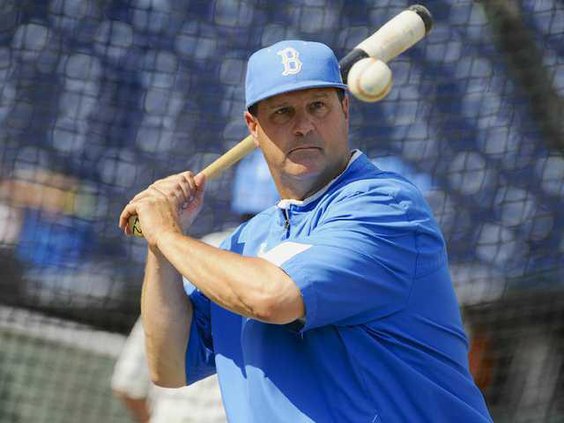JACKSON, Miss. — Tim Corbin sounded more like a philosopher than Vanderbilt's coach as he talked about the new flat-seam baseball designed to bring a little more scoring back to the college game.
Finally, he hopes, after decades of tweaks and trying to figure out the correct balance between offense and pitching, the sport might have found a solution that sticks.
"Through the generations of the game, it's been so up and down," said Corbin, who led the Commodores to their first national championship in 2014. "We've always wanted to find that medium where there's some harmony between offense and defense. I don't know if we've ever been exposed to that."
The change on the baseball is relatively subtle: The seams have been lowered so it's more like the one used at the professional level. Researchers found that the flat-seam ball could travel as much as 20 feet farther in the air than the previous raised-seam ball.
On the practice field, coaches and players are seeing the same results. Almost all expect at least a modest boost in offense.
Real results will be available soon: The college season starts on Friday and pretty much everyone is suggesting fans get the gloves ready in the bleachers.
"I think you're going to see a significant jump in offensive numbers across the board, not just in homers," UCLA coach John Savage said. "The ball is definitely more lively. Fly balls that used to hang up in the air and get caught are now falling for doubles. You're really going to have to have speed on defense."
University of San Francisco coach Nino Giarratano said the change was a win for everyone.
"The ball itself is going to have a good impact on the game," he said. "Maybe we'll get a little further carry out of the ball, which will make the game more exciting."
College baseball, which has used metal bats since 1974, was long known for mammoth homers and crooked numbers on the scoreboard — a game where even a 5-foot-9, 165-pound middle infielder could easily get a baseball out of the park.
That all changed in 2011, when new standards for the bats drastically reduced all kinds of offense. The effects were most pronounced during the College World Series at spacious TD Ameritrade Park in Omaha, Nebraska. Only three homers were hit during both the 2013 and 2014 tournaments, which matched the lowest total since 1966 when wood bats were used.
The lack of offense the past four years has been widely criticized, especially by coaches. At one point, UC Irvine coach Mike Gillespie called the bat change a "nightmare." TCU coach Jim Schlossnagle was also blunt: "It's just a travesty what we've done to college baseball."
After much clamoring for another change, the new baseball was seen as a compromise.
Not surprisingly, college hitters are pleased.
"The ball definitely jumps off the bat a little more if you square it up," Vanderbilt shortstop Dansby Swanson said. "The game has definitely been dominated by pitching the last few years. This might help make it a little more even."
Said Saint Mary's College third baseman Anthony Villa: "We seem to have a little more pop. The flat-seam baseballs feel good off the bat and throwing them across the diamond. They still roll true. I think it's a good change."
College pitchers also say there are reasons to be excited about the switch. Vanderbilt's Walker Buehler and UCLA's James Kaperlian — who are both considered high-level prospects for June's Major League Baseball amateur draft — don't expect to have many issues.
Kaperlian says it's clear that the new baseball will travel farther, but he feels any change that helps mimic conditions at the professional level is a good thing.
"Personally, I like it," Kaperlian said. "I think pitchers who throw tight breaking balls and throw through the glove are still going to be very successful. There shouldn't be too much of a drop off."
Buehler agreed: "If you're a guy who needed the high seams to get some spin on the ball, than it might be a problem. But for guys with power stuff — two-seam fastballs, cutters and sliders — I think it could be beneficial."
Savage said he hopes the main beneficiary will be college baseball as a whole.
"The (low scoring) era has treated us pretty well — we've been to the College World Series three of the last five years," Savage said. "But for the bigger picture and for the interest in the game, I think it's going to have a significant difference."
New balls adding pop





